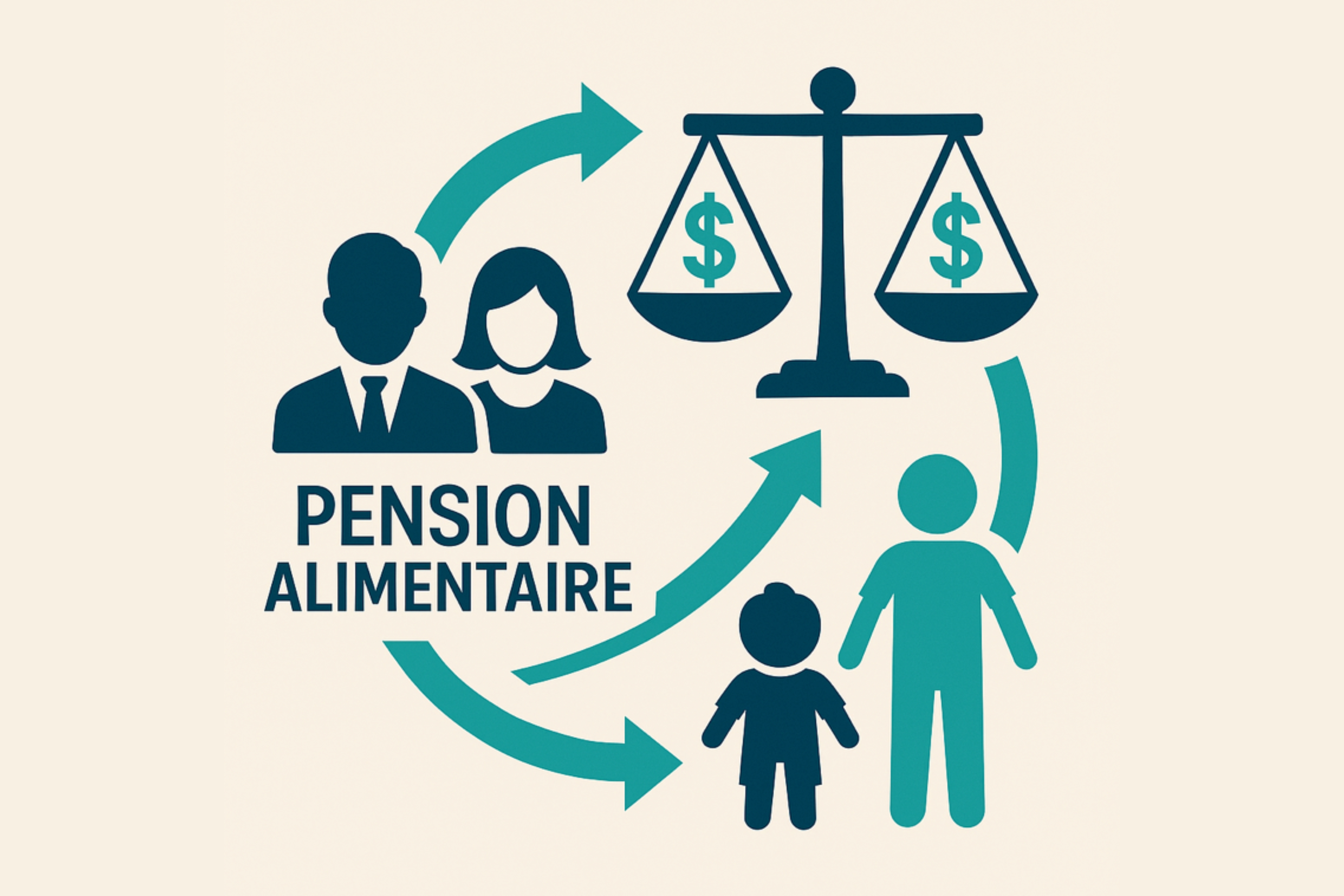Published on August 04, 2025
In Quebec, child support is a financial amount paid by one parent to cover a child’s essential needs. The calculation takes into account both parents’ income, custody time, special expenses, and the ability to pay. This guide explains each step required to obtain a fair contribution in accordance with the rules established by law.

Learn more
Child support: the legal framework in Quebec
Child support is designed to ensure that each child receives the necessary financial support for their well-being. In Quebec, it is governed by the Regulation Respecting the Determination of Child Support Payments. The amount is calculated using a standardized form.
This guide walks you step by step through how child support is determined. It considers the parents’ income, custody type, special expenses, and ability to pay. While the process may appear straightforward, certain specific rules or exceptions can influence the final result.
Understanding these steps is essential to ensure a fair and legally compliant child support amount.
Step 1: Determining the Parents’ Income
To start, the annual income of each parent must be determined. This includes income from all sources, such as:
- Salaries
- Spousal or child support received personally
- Employment insurance benefits
- Net rental income
- Net income from operating a business or self-employment
Step 2: Calculating the Available Income of Each Parent
From the annual income determined in Step 1, a base deduction is subtracted. This deduction is set by the Basic Parental Child Support Table. In 2025, this deduction is $13,575.
If applicable, union and professional dues are also subtracted. The remaining amount is the parent’s available income.
Then, the income-sharing factor reflects each parent’s portion of the combined available income. For example:
| Parent 1 | Parent 2 |
|---|---|
| Annual income: $60,000 | Annual income: $80,000 |
|
Available income: 60,000 − 13,575 = $46,425 |
Available income: 80,000 − 13,575 = $66,425 |
| Total available income: 46,425 + 66,425 = $112,850 | |
|
Mother's share: 46,425 ÷ 112,850 × 100 = 41.14% |
Father's share: 66,425 ÷ 112,850 × 100 = 58.86% |
Step 3: Calculating the Child Support Contribution
At this stage, the Child Support Table is used. Locate the row that matches the combined available income of the parents. Then, identify the column that matches the number of children involved in the request.
In our example, with $112,850 of total available income and two children, the basic annual contribution is $16,980.
consult the basic parental child support table
To determine the annual contribution of one parent, multiply the total by that parent’s income share:
Parent 1: 16,980 × 0.4114 (or 41.14%) = $6,985.57
Step 4: Accounting for Special Expenses
Each parent inevitably incurs expenses for their children. These are included in the child support calculation form and may include:
- Childcare costs
- Post-secondary education
- Special expenses
Special expenses may include:
- Medical expenses
- School-related expenses
- Extracurricular activities that meet the child’s needs
This may include private school, orthodontics, elite sports, driving lessons, or therapy. The form assumes that these are covered by the parent receiving support. If the other parent pays for some of these expenses, that amount is subtracted from the support they owe.
Step 5: Adjusting for Custody Time
The amount of child support also varies depending on the custody arrangement. It differs between shared custody and sole custody.
Custody type is determined by the number of days the child spends with each parent per year. For example, if a child spends 0 to 73 days annually with one parent, the other parent is deemed to have sole custody.
In our example, if both children are in sole custody with Parent 1, who pays $5,000 in expenses:
- Total support: 16,980 + 5,000 = $21,980
- Parent 2’s share: 21,980 × 0.5886 = $12,937.43
If Parent 2 pays $2,000 of those $5,000 expenses:
- Adjusted support: 12,937.43 − 2,000 = $10,937.43
Step 6: Verifying the Debtor’s Ability to Pay
Unless otherwise decided by the court, a parent cannot be required to pay more than half of their available income.
In our example:
- Half of Parent 2’s income: 66,425 ÷ 2 = $33,212.50
- Since $12,937.43 is less than that amount, Parent 2 has the ability to pay
Step 7: Payment Frequency
Child support can be paid in different frequencies (monthly, weekly, etc.). For monthly payments:
- 12,937.43 ÷ 12 = $1,078.12/month
Conclusion
Calculating child support may seem simple at first glance. However, certain details can greatly influence the final amount—especially when multiple children or complex custody arrangements are involved. Understanding each step of the calculation process is crucial to ensure that children receive fair support that meets their actual needs. Do you have questions about your situation? Feel free to contact one of our legal professionals for tailored advice. You can also read our article on family law to better understand the legal framework.